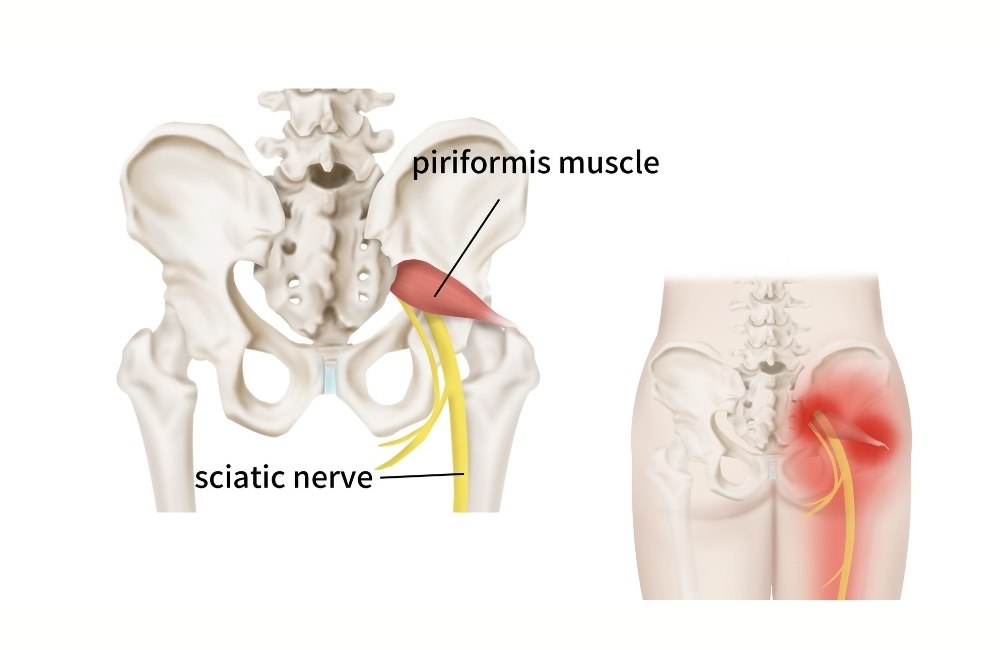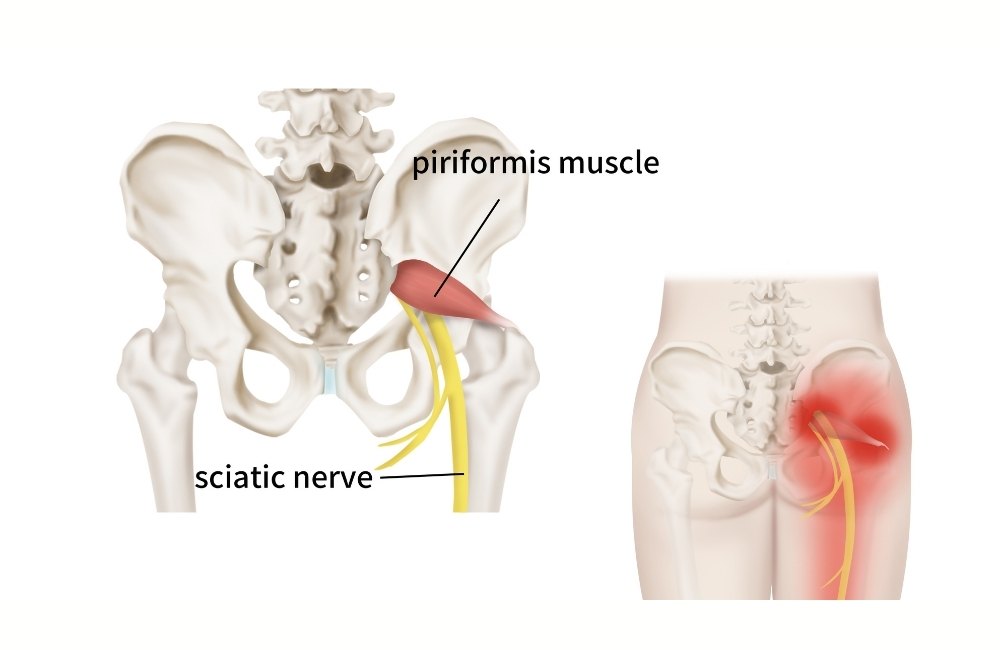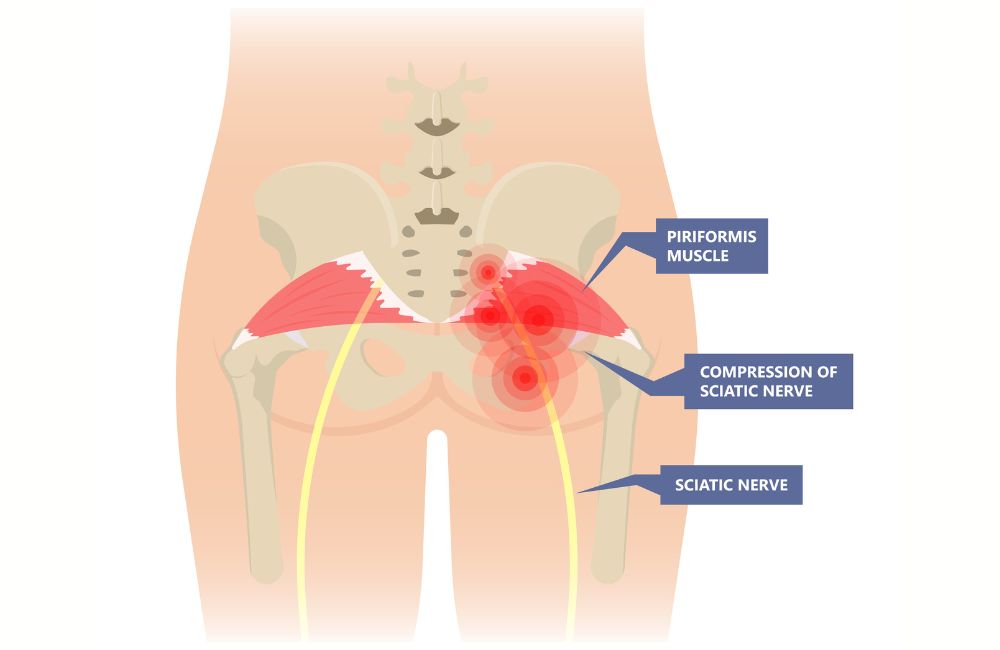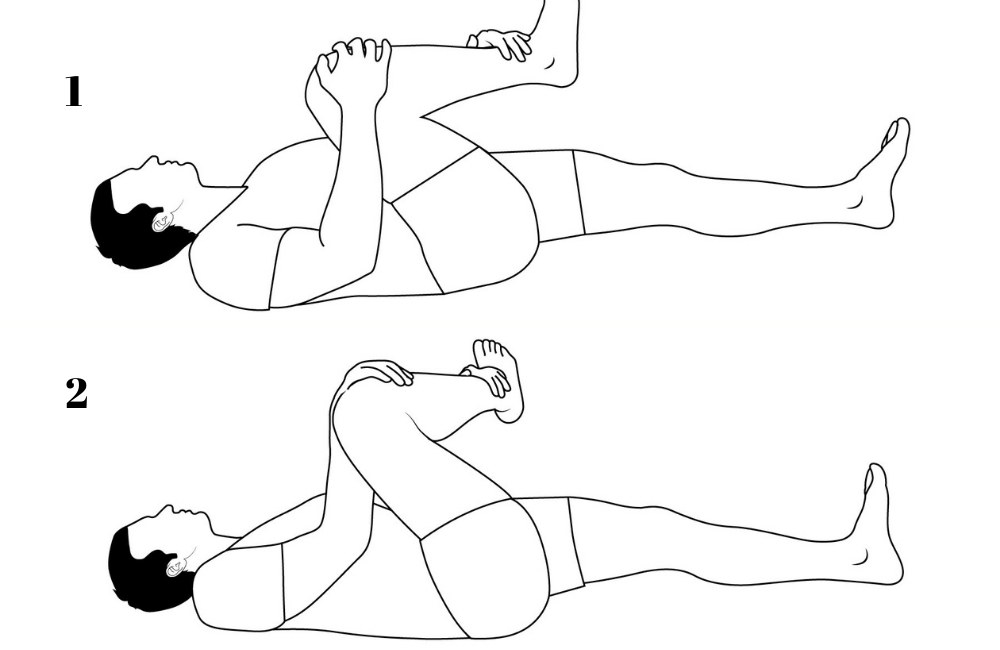
Looking for a piriformis muscle stretch to help rid you of the nerve pain that strikes down from your glute to the leg? We got you covered!
If you’ve ever experienced radiating pain in your low back and legs, odds are you’ve done something to irritate your sciatic nerve.
This irritation could be due to a bulging disc in your low back, direct trauma to the nerve itself, a side effect of certain medications, or overly tight muscles.
One such tissue that frequently compresses the sciatic nerve when tight is the piriformis muscle.
You may also like:
A PT Shares the 7 Stretches He Does Every Day To Keep His Body ‘Young and Healthy’
5 Best Stretches to Get Rid of Sciatica Hip and Lower Back Pain
How To Get a Deep Piriformis Stretch To Get Rid of Sciatica Pain
Piriformis Muscle Anatomy

The piriformis is a relatively small muscle located underneath the gluteus maximus. By attaching firmly to both the sacrum and the upper portion of the femur, this muscle serves as one of the primary external rotators of the hip.
But due to the unique position of the piriformis, it can place a considerable amount of tension on the sciatic nerve as it passes through the muscle on its path down the leg.
When the piriformis muscle becomes tight enough to pinch the sciatic nerve and cause radiating pain down the leg, the condition is known as “Piriformis Syndrome”.
Piriformis Muscle Stretch to Ease the Nerve Pain
Piriformis Muscle Stretch to Relieve Sciatic Nerve Pain

One of the most straightforward options to ease the nerve pain caused by a tight piriformis is stretching.
There are tons of stretches to choose from, and which ones are best for your specific symptoms will vary based on your individual needs.
To explain further: when I test someone and diagnose piriformis syndrome, I will often have them try a few different piriformis stretches.
Which stretches I prescribe to them will depend on whether or not the stretches:
- Allow them to experience a good stretching sensation without pain.
- Are reasonable for them to perform based on their body type and mobility.
In the following section, I will describe the most commonly prescribed piriformis stretch.
This variation on the movement is reasonable for almost everyone and usually serves as a good “starter” exercise for those who are not very flexible.
Plus, it is very easy to modify if you aren’t quite feeling the stretch as much as you would like.
Supine Piriformis Stretch
The supine piriformis stretch is the classic recommendation for those that are suffering from piriformis syndrome (or those that just have a tight piriformis muscle in general).
This is my favorite go-to stretch for those with piriformis syndrome for the following reasons:
- It’s easy for most people to lie on their backs.
- There are tons of ways to modify this stretch to ensure it is the correct intensity for the patient in question.
- The patient can easily transition into other stretches for the hamstrings, glutes, and other muscles from this position.
Performing this stretch as indicated in the next section can be a great step towards relieving piriformis tightness and helping you get back to a pain-free life.
How to Perform the Supine Piriformis Stretch

You’ll want to achieve 120 seconds (2 minutes) of total stretching time each session, for each muscle group. How you break the 120 seconds up is up to you. However, I’d recommend starting with 12 sets of 10-second holds.
As far as intensity is concerned, aim for a feeling of “moderate discomfort” with every stretch.
In terms of frequency, you should try to complete a stretching session 3-5 times each week. You can even stretch 7 days a week if you want to!
Supine Piriformis Stretch Step-By-Step Instructions
- Begin by lying on your back with your knees bent (this is known as “hook lying position”).
- Grasp your right leg with both hands, turning your leg outward slightly (you should aim to rotate your leg enough that your shin is perpendicular to your trunk).
- Gently pull your leg toward your chest.
- Once you feel a sense of mild discomfort and stretch in your right piriformis muscle, hold this position and count slowly to ten.
- After holding the stretch for ten seconds, release the stretch and relax for a few seconds.
- Repeat the stretch 12 times, then switch legs.
- If at any point you notice increased symptoms of tingling, burning, etc. in your back, leg, or foot: first attempt to slightly reposition yourself. If the symptoms continue, discontinue the exercise and consult a qualified medical professional for guidance.
When to See a Physical Therapist
If your symptoms are:
- Unrelenting (they never get better no matter what you do, and may even be getting worse),
- Keeping you from getting enough sleep at night,
- Causing you to change the way you walk or making you trip and fall;
I recommend you see a physical therapist or your physician immediately. The above stretch recommendation is for mild cases of piriformis syndrome/piriformis tightness only.
Any severe symptoms should be evaluated by a healthcare practitioner.
Likewise, if you try out the stretch described earlier in this article and don’t experience any relief of your symptoms, you should consider a consultation with a PT. this will ensure that you are performing the exercise correctly and that there are no other issues that may be of concern.
The Bottom Line
Piriformis tightness is a tricky issue that can cause the sciatic nerve to become pinched and irritated.
If you’re experiencing sciatica and/or piriformis tightness, try out the exercise listed above.
If you don’t feel any relief after trying the stretch for a few days, or your symptoms get worse, be sure to contact your doctor or physical therapist ASAP.
Good luck!


